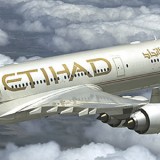Top 10: The safest low-cost airlines in the world in 2025

Low-cost carriers deliver around five billion passengers a year safely to their destinations, and most have a safety record that’s on par with their full-service neighbors. But it never hurts to know which are ranked as the safest low-cost airlines for that extra bit of confidence.
The market share of the low-cost airline is growing. Globally, low-cost carriers represent 40% of airline capacity, although they are more prevalent in some markets than others. Some European countries have more than 50% of their capacity provided by budget airlines, whereas the North American domestic market has just a 35-40% low-cost share.
AirlineRatings, an airline review site, evaluates the ‘safety’ of these low-cost airlines using more than just an incident record. The age of the fleet, the skills of the pilots and even the profitability of the company are also considered. Rounding out their research, the AirlineRatings team consults with check pilots and aviation experts to determine which are the safest low-cost airlines.
For 2025, the team ranked Hong Kong Express the safest airline in the world. Founded in 2004, HK Express was acquired by Cathay Pacific in 2019, and is clearly following in its parent’s footsteps, as Cathay secured joint third in the safest full-service airline list.
Taking silver position is another airline following the trend of its parent company. Jetstar, a Qantas subsidiary, was ranked second safest low-cost airline in the world. Qantas also came second in the full-service category.
Rounding out the top three is everyone’s favorite Irish airline Ryanair. The epitome of efficiency, Ryanair carries 184 million passengers a year to over 240 destinations around Europe and North Africa. Maintaining an operation of that scale and being named the third safest low-cost airline in the world is an achievement indeed.
In full, the top 10 safest low-cost airlines for 2025 are:
1Hong Kong Express2Jetstar3Ryanair4easyJet5Frontier Airlines6AirAsia7Wizz Air8Vietjet Air9Southwest Airlines10VolarisStay with us as we look at each of the world’s safest low-cost airlines in a bit more depth.
1. Hong Kong Express
Founded2004HeadquarteredHong KongFleet size41Destinations29Parent companyCathay PacificPhoto Dltl2010 / WikimediaFounded by casino billionaire Stanley Ho in 2004, HK Express has come a long way in two decades. Starting out as a full-service airline connecting secondary cities with Embraer regional jets, it was bought by HNA Group in 2006 but didn’t become a low-cost carrier until 2013.
Bought by Cathay in 2019, the airline has gone from strength to strength, operating a fleet of 41 aircraft as of January 2025. Its fleet is all Airbus A320 family jets, dominated by the larger A321, and with an even split between neos and ceos.
“Safety is paramount to HK Express, ensuring the safety of our customers and crew is a 24/7 job where no expense is spared,” says the airline. Indeed, it has had no serious accidents or even notable incidents since launching 20 years ago, demonstrating its commitment.
HK Express has been in the top 10 safest low-cost airlines list several times in the past, but it’s the first year it has won the top spot.
2. Jetstar
Founded2003HeadquarteredMelbourne, AustraliaFleet size87Destinations39Parent companyQantasPhoto BriYYZ / WikimediaWell-known Asia-Pacific low-cost Jetstar has snagged second place for 2025. Founded in 2003, the airline has largely been a profitable venture for Qantas, earning around AU$400 million ($252 million) a year until the pandemic.
While the COVID years hit Australian and Asian airlines particularly hard, Jetstar has rebounded well, posting an AU$404 million ($254 million) profit in 2023. Across the group, which includes Jetstar Airways (Australia), Jetstar Asia, and Jetstar Japan, there is a fleet of 112 aircraft with more on the way.
With its 11 Boeing 787 Dreamliners, the Australian arm, Jetstar Airways, is one of the few airlines in the world to make low-cost long-haul work. Where others have failed, Jetstar has built a thriving business out of budget trips to far-flung destinations in Thailand, Indonesia, Japan and China.
Given Jetstar’s robust profitability, young fleet (average age 10 years) and impeccable safety record, it’s no surprise it’s done well in the rankings this year. Last year, it was number one, but despite losing the crown to its rival in Hong Kong, it remains a very safe low-cost airline to fly with.
3. Ryanair
Founded1984HeadquarteredDublin, IrelandFleet size609Destinations235Parent companyRyanair HoldingsPhoto Markus Mainka / ShutterstockLove it or hate it, the Ryanair Group is a triumph of the low-cost model. Starting out as a tiny regional carrier with a 15-seater Embraer Bandeirante, it has grown into Europe’s largest airline by passenger numbers and a multinational group with 610 aircraft.
As well as the OG Ryanair, also known as Ryanair DAC, the group has another four active subsidiaries. Ryanair UK has a modest fleet of 15 aircraft, while Malta Air has 174. Buzz, based in Poland, operates 74 planes, while Ryanair DAC has the biggest fleet at 321 aircraft.
Across all these subsidiaries, the only type of aircraft flown is the Boeing 737. But there’s an outlier in the group, and it’s Lauda Europe. Founded by Niki Lauda, the Formula 1 legend, Ryanair stepped in to buy the airline in 2018, strategically blocking Lufthansa from doing so in the process. But this airline came with something new that Ryanair had no experience with.
Lauda’s fleet was all Airbus A320s. Naturally, it was assumed all-Boeing Ryanair would get rid of the Airbuses as quickly as possible, but that’s not been the case. In fact, the carrier has discovered that sometimes it’s good to have your eggs in more than one basket and has found new opportunities with the A320s such as more available pilots and parts. Whether they stay long-term remains to be seen.
The operations of the Ryanair Group are really quite astounding. Daily, more than 3,600 flights take off from 240 airports in more than 40 countries. Annually, more than 184 million passengers board Ryanair flights. In 2025, the airline expects this number to top 200 million. It’s point-to-point operations on a mega scale, and to do all that whilst still being named the third safest low-cost airline on the planet is really something to be proud of.
4. easyJet
Founded1995HeadquarteredLondon, UKFleet size347Destinations157Parent companyeasyGroupPhoto M901QX / WikimediaSnapping at the heels of Ryanair is its low-cost European rival easyJet. Although it was later to the market, this popular budget carrier had a similar trajectory in its early life.
Launched with a pair of 737s, it operated regional routes but launched international services a year later. Since then, it has grown to a group of three airlines operating 354 aircraft between them. Like Ryanair, its fleet age averages 10 years.
Unlike Ryanair, however, this airline is built on Airbus A320s. The fleet is still heavy on A320-200s, but A320neos and A321neos are gradually replacing the older technology models. easyJet operates to 157 destinations and carries around 83 million passengers a year.
5. Frontier Airlines
Founded1994HeadquarteredDenver, ColoradoFleet size159Destinations85Parent companyIndigo PartnersPhoto Frontier AirlinesFrontier Airlines has been named the fifth safest low-cost airline in the world, making it the safest budget carrier in the US. It has never had a fatal crash, although a turbulence event in 2023 saw a flight attendant break her hip.
Operating out of Denver, Colorado, the airline has a fleet of 159 Airbus narrowbodies, dominated by new technology neos. This young fleet boasts an average aircraft age of just 4.7 years, allowing Frontier to benefit from fuel savings and pass those savings along to its passengers in the form of cheaper fares.
Primarily focused on domestic US routes, Frontier also heads into Mexico, the Caribbean and Central America, running more than 500 routes across its network. It carries around 20 – 25 million passengers each year.
6. AirAsia
Founded1993HeadquarteredKuala Lumpur, MalaysiaFleet size253Destinations140Parent companyTune GroupPhoto Bahnfrend / WikimediaAirAsia is a well-known low-cost brand in the Asia-Pacific region, operating more than 250 aircraft across multiple Asian countries. Established in Malaysia in 1993, the group has expanded to include almost a dozen subsidiaries, although some are now defunct.
Of the active subsidiaries, the largest is Thai AirAsia with a 60-aircraft fleet. Indonesia AirAsia has 30, while the Philippines branch has 25. AirAsia Malaysia maintains the largest fleet with 108 Airbus planes.
The group suffered badly during the pandemic but took the opportunity to accelerate its digital transformation. Now, the group is restructuring, combining AirAsia with AirAsia X and separating out the other parts of the business to ensure financial stability.
The only fatal accident attributable to the group occurred in December 2014, when an Airbus A320 operated by AirAsia Indonesia impacted the water of the Java Sea on a flight from Surabaya (SUB) to Singapore (SIN). Avionics failure and mistakes by the flight crew were considered to be the cause of the crash, which took the lives of 162 people.
For the past decade, AirAsia has been incredibly safe with very few even minor incidents reported.
7. Wizz Air
Founded2003HeadquarteredBudapest, HungaryFleet size220Destinations191Parent companyIndigo PartnersPhoto N509FZ / WIkimediaHungarian airline Wizz Air has only been around for just over two decades. Founded by CEO Jozsef Varadi – the former CEO of Malev Hungarian Airlines – with the backing of private equity firm Indigo Partners, Wizz took its first flight from Katowice (KTW) in May 2004.
Today, it’s flourished into a widespread airline group, with 226 aircraft spread across four active subsidiaries. Wizz Air UK now sports a fleet of 18, while upstart Wizz Air Abu Dhabi has 12. Wizz Air Malta has 97 aircraft on its books, and the original Wizz Air in Hungary has a fleet of 99.
Wizz prides itself on operating a young and fuel-efficient fleet, which is reflected in the average fleet age across the group of just 4.7 years. While the A320-200 and A320neo still form a significant part of the fleet, Wizz Air has long said its future is in the larger and incredibly efficient A321neo. It has 140 of the type in its fleet, the largest of any airline in the world.
In its 20 years of operation, Wizz has never had a fatal accident. In fact, the only serious incident recorded was in 2013, when a landing gear failure saw one of its A320s crash land at Fiumicino Airport (FCO). Passengers were evacuated via emergency slides, but nobody was seriously hurt.
Wizz Air’s focus is on efficiency and no frills but comfortable service. With a place in the top 10 safest low-cost airlines for 2025, passengers can be confident they’re in good hands with this budget airline.
8. Vietjet Air
Founded2007HeadquarteredHanoi, VietnamFleet size91Destinations115Parent companyN/APhoto Bahnfrend / WikimediaAs the first privately owned airline in Vietnam, Vietjet has been setting new standards in aviation since its inception in 2007. Although it was founded that year, it would be 2011 before the first flights took off, hampered by delays relating to the Great Recession and various regulatory red tape.
The airline started slowly, with three A320s, but began really ramping up its fleet from 2015 onwards. Today, it has 114 aircraft across its two group airlines – Thai Vietjet Air and Vietjet Air. These are mainly A320 family aircraft, but in 2021, the group expanded to include widebody A330s in its fleet. As of January 2025, it has seven A330s in operation.
Vietjet is tagged to be one of the first airlines outside of China to operate the ARJ21, or C909 as it’s called today. TransNusa in Indonesia is the first international airline to fly the type, but Vietjet is likely to be the second as it has wet-leased two aircraft specifically for high demand during Tet, or Chinese New Year.
No fatalities have been recorded relating to a Vietjet flight, and with its 7.8-year-old fleet and profitable operations, the carrier has won a deserved spot in the top 10 safest low-cost airlines for 2025.
9. Southwest Airlines
Founded1967HeadquarteredDallas, TexasFleet size802Destinations121Parent companyN/APhoto Southwest AirlinesSouthwest runs a massive operation, with over 800 airplanes operating as many as 4,000 flights a day across the US and Central America. It’s credited with paving the way for low-cost carriers, and inspiring the model now used by successful budget airlines like Ryanair.
Financially, the airline has had a few ups and downs in recent years. The 2022 winter meltdown lost it more than a billion dollars. Having been profitable for 47 consecutive years from 1973 to 2019, the pandemic and operational challenges have seen it making loss after loss. But 2024 was a transformative year, with the company posting record full year revenues of $27.5 billion.
That strong performance along with its clear focus on safety – “it’s our number one priority” – allowed it to climb into the top 10 of AirlineRatings’ safest low-cost airlines. That’s despite the airline having been under investigation for safety throughout the latter half of 2024. This followed a number of incidents in the summer where Southwest flights were not where they were supposed to be.
The good news is that the FAA “did not identify any significant safety issues” during the review, so we can consider Southwest to be fully vetted and checked as a safe, solid airline.
10. Volaris
Founded2005HeadquarteredMexico City, MexicoFleet size134Destinations69Parent companyVuela Compañía de AviaciónPhoto NS777 / WikimediaMexican low-cost Volaris will be celebrating its 20th birthday in 2025, having grown into a formidable airline over those two decades. Operating a fleet of 135 aircraft, it has fallen on the Airbus side of the fence, flying a mix of A320 family aircraft.
Like Frontier and Wizz, Volaris is involved with Bill Franke’s Indigo Partners, although they don’t have a controlling stake. At the Dubai Airshow in 2017, the partners ordered more than 400 A320neo family jets, of which 80 are slowly being delivered to Volaris. As more neos arrive, the older ceos are retiring, keeping its fleet age young at just 6.6 years.
Volaris has never had a fatal accident, although it did have one incident in 2024 of note. In December, a passenger tried to enter the flight deck on a service from Leon to Tijuana. The passenger did not succeed and was arrested when the aircraft touched down at its diversion airport of Guadalajara.
Changes to the safest low-cost airlines list for 2025
The most notable change, of course, was Hong Kong Express getting number one for the first time. However, further down the list saw some interesting changes too.
British airline Jet2 made it onto the list for the first time, scoring a respectable 14th place in the ranking. Young Japanese airline Zipair found a place at 23rd, as did airBaltic in 25th place.
Notably missing is Spirit Airlines, which usually ranks well in the safety stakes. AirlineRatings explained that the airline scored worse than usual because of its shaky financial situation – it filed for Chapter 11 bankruptcy protection in November 2024.The post Top 10: The safest low-cost airlines in the world in 2025 appeared first on AeroTime.
Low-cost carriers deliver around five billion passengers a year safely to their destinations, and most have a safety…
The post Top 10: The safest low-cost airlines in the world in 2025 appeared first on AeroTime.




